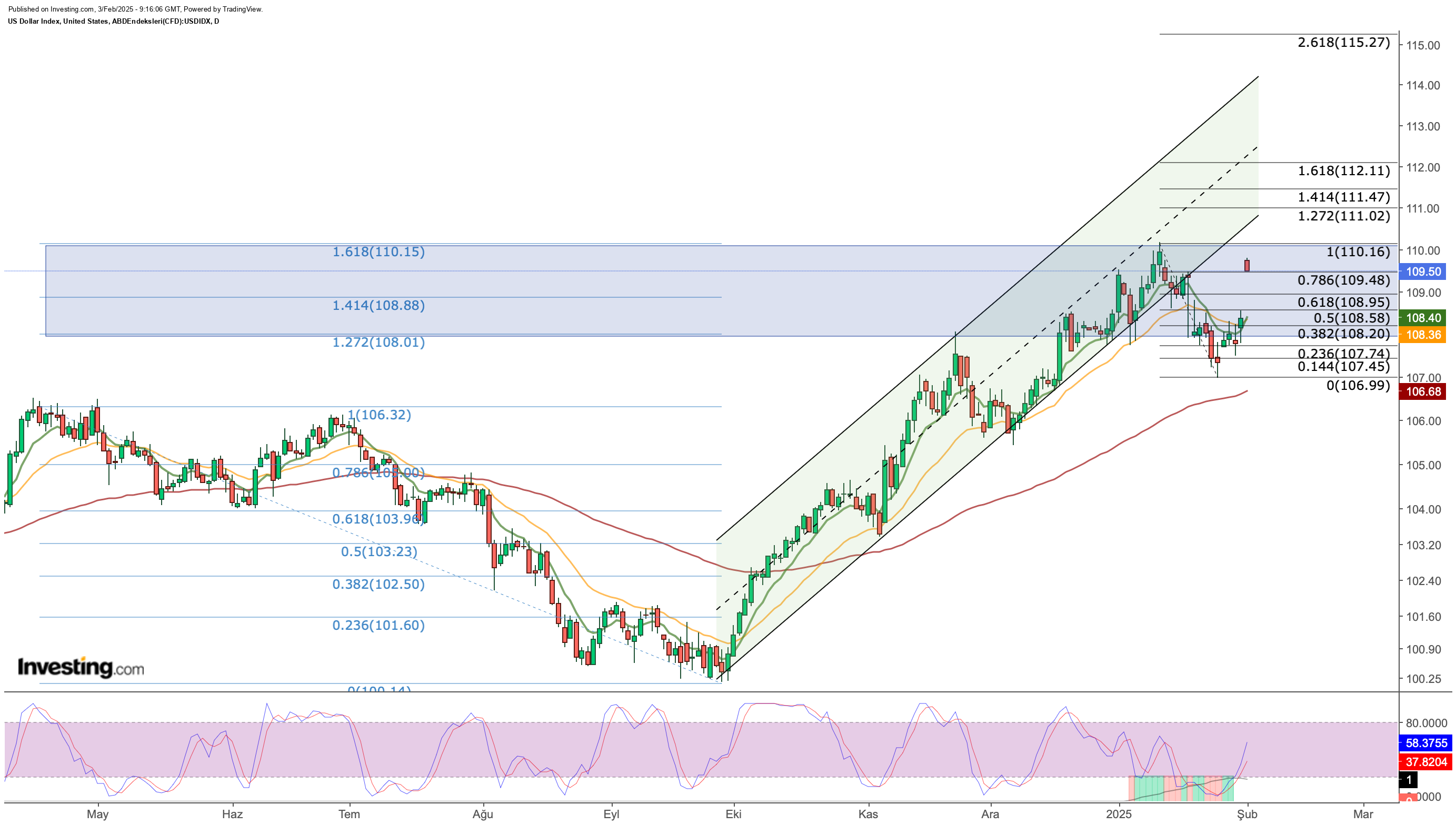- Trump's tariffs are pushing the U.S. dollar to new heights, shaking global currency markets.
- Escalating tensions and a stronger dollar could lead to inflation and economic disruptions.
- As tariffs rattle markets, the dollar may keep rising—unless trade tensions ease.
- Are you looking for actionable trade ideas to navigate the current market volatility? Unlock access to InvestingPro’s AI-selected stock winners using this link.
When President Donald Trump signed orders to impose hefty tariffs on Mexico, Canada, and China, he set off a wave of volatility that rippled through global markets.
With tariffs reaching 25% on most goods from Mexico and Canada and 10% on Chinese imports, Trump’s actions, aimed at tackling illegal immigration and drug trade, sparked immediate reactions worldwide.
Starting tomorrow, the tariffs will impact about $1.3 trillion worth of trade, covering nearly half of U.S. imports. This shift will drive the average U.S. tariff rate from 3% to over 10%, setting the stage for significant disruptions in global trade.
Market Volatility Erupts: Dollar Index Surges
Trump’s tariff announcement triggered a flurry of market movements. Canada and Mexico responded with retaliation threats, while China vowed to take the issue to the World Trade Organization. Amid these tensions, the US dollar surged, gaining 1% to open the week at 109.78, after closing the prior week at 108.5.
As expected, the strength of the dollar had an immediate and profound effect on major currencies. The Canadian dollar dropped to its lowest point since 2003, while the Mexican peso tumbled to a 3-year low. The Chinese yuan also fell sharply, bringing USD/CNH to the 7.36 resistance level, while the Euro continued its downward slide against the dollar.
What’s at Stake for Global Economies?
The impact of these tariffs stretches far beyond currency markets. Economists predict that rising tariffs will add inflationary pressure on the U.S. economy, potentially dragging GDP down by 1.2%. Furthermore, this escalation is likely to make the Federal Reserve's already cautious approach to interest rate cuts even more complex.
In response to this mounting uncertainty, investors may shift toward safer assets, such as the U.S. dollar, driving further demand. This could have significant ramifications for developing countries, where a weakened currency exacerbates economic instability.
The ripple effect of these tariff battles will undoubtedly continue to influence central bank policies worldwide. While the European Central Bank faces challenges from a shrinking Eurozone economy, the Bank of Japan seems less affected, with the Yen performing more robustly against the dollar.
US Dollar Technical View: A Closer Look at the DXY
As Trump’s tariff decisions continue to shake the market, we’re seeing notable movements in the DXY. Last week, the index found support at the 107 level, and a 1% jump to start this week has brought it to the Fibonacci expansion zone. The next key resistance lies at 110.15, followed by 111-112 if demand for the dollar persists.

However, Trump’s penchant for quickly changing course could lead to a more volatile scenario. If tariff tensions ease, we might see a pullback in the dollar, with DXY finding support at 109.5. If this breaks, the next levels of support are 108.95 and 108.2. For now, the technical indicators suggest that the dollar could continue its upward trend, but the situation remains fluid.
What’s Next?
As the world watches these developments unfold, investors must prepare for a volatile period ahead. While Trump’s tariffs have undeniably strengthened the dollar, the broader economic picture is more complex. With global trade on edge and the Fed’s policy now even more uncertain, market participants should keep a close eye on the evolving dynamics.
***
Disclaimer: This article is written for informational purposes only. It is not intended to encourage the purchase of assets in any way, nor does it constitute a solicitation, offer, recommendation or suggestion to invest. I would like to remind you that all assets are evaluated from multiple perspectives and are highly risky, so any investment decision and the associated risk belongs to the investor. We also do not provide any investment advisory services.

